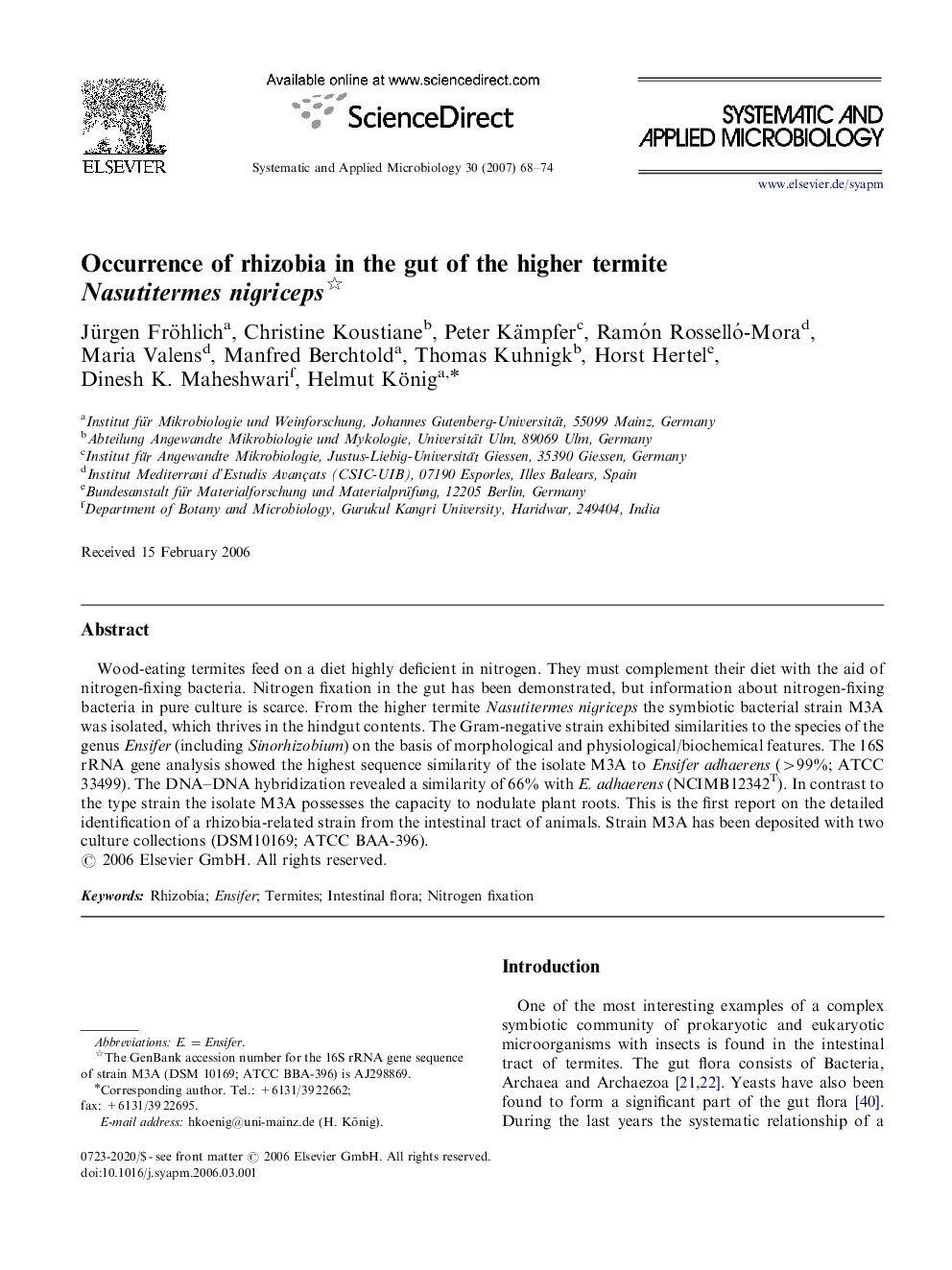| Article ID | Journal | Published Year | Pages | File Type |
|---|---|---|---|---|
| 2063504 | Systematic and Applied Microbiology | 2007 | 7 Pages |
Wood-eating termites feed on a diet highly deficient in nitrogen. They must complement their diet with the aid of nitrogen-fixing bacteria. Nitrogen fixation in the gut has been demonstrated, but information about nitrogen-fixing bacteria in pure culture is scarce. From the higher termite Nasutitermes nigriceps the symbiotic bacterial strain M3A was isolated, which thrives in the hindgut contents. The Gram-negative strain exhibited similarities to the species of the genus Ensifer (including Sinorhizobium) on the basis of morphological and physiological/biochemical features. The 16S rRNA gene analysis showed the highest sequence similarity of the isolate M3A to Ensifer adhaerens (>99%; ATCC 33499). The DNA–DNA hybridization revealed a similarity of 66% with E. adhaerens (NCIMB12342T). In contrast to the type strain the isolate M3A possesses the capacity to nodulate plant roots. This is the first report on the detailed identification of a rhizobia-related strain from the intestinal tract of animals. Strain M3A has been deposited with two culture collections (DSM10169; ATCC BAA-396).
